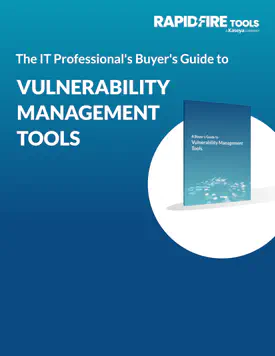Vulnerability management is a crucial aspect of IT security, which involves identifying, assessing and mitigating security vulnerabilities in systems and applications. However, organizations tend to make some common mistakes during the vulnerability management process.
Do you conduct regular scanning and assessments?
Failing to conduct regular vulnerability scans and assessments can lead to outdated information about the security posture of your systems. New vulnerabilities emerge constantly, so regular scanning is essential to stay up to date.
Do you maintain a complete asset inventory?
If you don’t have a complete inventory of your assets (systems, applications, devices), you might miss scanning some critical components, leaving them vulnerable to attacks.
Do you and your team prioritize issues?
Not all vulnerabilities are equal in terms of risk. Failing to prioritize vulnerabilities based on their severity and potential impact can lead to misallocation of resources. Make sure to focus on fixing the most critical vulnerabilities first.
Do you have a patch management process?
Even if vulnerabilities are identified, failing to implement patches in a timely manner can leave systems exposed. Effective patch management is essential to address known vulnerabilities.
Does your team communicate with each other and key stakeholders?
Lack of communication between IT security teams and the wider IT organization can result in misunderstandings and delays in addressing vulnerabilities.
Are you overlooking third-party components?
Many applications and systems rely on third-party components. Ignoring vulnerabilities in these components can expose your systems to risks.
Do you and your team pay close attention to configuration issues?
Vulnerabilities can arise from misconfigured systems and applications. Focusing solely on software vulnerabilities might cause you to overlook configuration-related risks.
Is your team addressing “low” severity vulnerabilities?
While high-severity vulnerabilities require immediate attention, ignoring low-severity vulnerabilities can give attackers a foothold for later exploitation.
Is your remediation testing adequate?
Implementing patches or fixes without proper testing can lead to unintended consequences, including system downtime or instability.
Are you addressing end-of-life systems?
Unsupported or end-of-life systems might not receive security updates from vendors, leaving them susceptible to known vulnerabilities.
Does your team rely too heavily on automated tools?
While vulnerability scanning tools are helpful, they might not catch every issue. Manual assessment and validation are crucial for a comprehensive security approach.
Do you keep upper management informed about the vulnerability management process?
Effective vulnerability management requires support and resources from upper management. Lack of executive involvement can lead to inadequate resource allocation.
Is your team paying attention to insider threats?
Not all vulnerabilities are external. Insider threats, whether intentional or accidental, can pose significant risks that need to be addressed.
Is your follow-up consistent?
After vulnerabilities are identified and initially patched, it’s important to ensure that changes are properly documented and that security measures remain in place.
Have you implemented a process to learn from incidents?
Not analyzing and learning from past security incidents can result in repeating the same mistakes and vulnerabilities.
To avoid these common mistakes, organizations should establish a well-defined vulnerability management process, allocate resources appropriately, stay informed about emerging threats, and maintain a culture of security awareness throughout the organization.
If you’re looking for a vulnerability management tool that is budget-friendly, meets your needs and can adapt to changes in your business, you should consider VulScan.
VulScan is the industry-leading vulnerability management platform that provides both internal and external vulnerability scanning and can be equipped with an optional portable scanner you can tote from one location to another for ad hoc scans. It includes all the key features and functions you need, without the unnecessary bells and whistles that add complexity and cost.
Get a demo of VulScan and see how it puts you in the ideal position to deliver vulnerability management and simplify the vulnerability management lifecycle.
